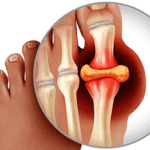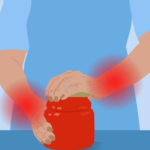Introduction
Arthritis, characterised by joint inflammation, often affects the foot and ankle, causing pain and stiffness that can hinder daily activities. With over 100 different types, arthritis is a common ailment that affects these small joints and can significantly impact mobility and quality of life.
While arthritis has no cure, various treatments can slow its progression and manage symptoms effectively, allowing many individuals to lead active and fulfilling lives.
Anatomy of the Foot and Ankle
The foot and ankle are complex structures vital for movement and support. The ankle joint comprises three bones, while the foot contains 28 bones and over 30 joints, allowing for extensive mobility and support functions.
- Articular Cartilage: Covers the ends of bones, ensuring smooth joint movement.
- Synovium: Produces lubricating fluid to reduce friction during movement.
- Ligaments: Connect bones and provide joint stability.
- Muscles and Tendons: Support and move the joints.
Common Types of Arthritis
- Osteoarthritis: Often occurring in middle-aged and older individuals, osteoarthritis involves the gradual wearing away of cartilage, causing bones to rub together and leading to pain and stiffness. Risk factors include age, obesity, and family history.
- Rheumatoid Arthritis: An autoimmune disorder where the immune system attacks joint tissues, causing inflammation, pain, and deformity. It typically affects joints symmetrically and can start in the feet and ankles.
- Posttraumatic Arthritis: Develops after an injury such as a fracture or dislocation, leading to cartilage deterioration over time. Injured joints are more likely to become arthritic even with proper treatment.
Symptoms of Foot and Ankle Arthritis
Symptoms vary depending on the affected joint but often include:
- Pain during movement or vigorous activity
- Tenderness when the joint is pressed
- Swelling, warmth, and redness
- Increased stiffness and pain in the morning or after rest
- Difficulty walking due to pain and instability
Diagnosis
Diagnosing arthritis involves a detailed medical history, physical examination, and diagnostic tests:
- X-rays: Identify joint space narrowing, bone spurs, or fractures.
- Additional Imaging: Bone scans, CT scans, or MRIs to assess bone and soft tissue conditions.
- Laboratory Tests: Blood tests to identify specific types of arthritis, such as rheumatoid arthritis.
Treatment Options
Although there is no cure for arthritis, various treatments can help manage pain and improve joint function.
Nonsurgical Treatments
- Lifestyle Modifications: Reducing activities that cause pain, switching to low-impact exercises, and maintaining a healthy weight.
- Physical Therapy: Exercises to improve range of motion, flexibility, and muscle strength.
- Assistive Devices: Braces and custom shoes to support joints and alleviate pain.
- Medications: NSAIDs for reducing pain and swelling, and cortisone injections for temporary inflammation relief.
Surgical Treatments
If nonsurgical methods are ineffective, surgery may be necessary.
- Arthroscopic Debridement: Removal of loose cartilage and bone spurs to alleviate pain.
- Arthrodesis (Fusion): Fusing bones to eliminate painful joint movement.
- Total Ankle Replacement: Replacing damaged joint surfaces with artificial implants for better mobility and pain relief.
Recovery
Recovery from surgery involves pain management, elevating the foot to reduce swelling, and possibly physical therapy. Full recovery may take several months, depending on the procedure and individual condition.
Conclusion
Arthritis in the foot and ankle can significantly impact daily life, but with appropriate treatment, many individuals can manage their symptoms and maintain an active lifestyle. For personalized advice and treatment, consult with a healthcare professional or orthopaedic specialist





